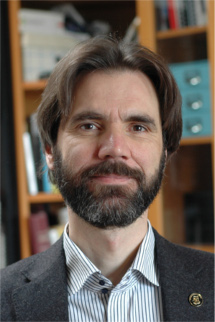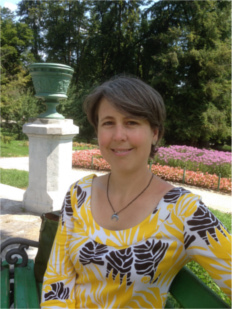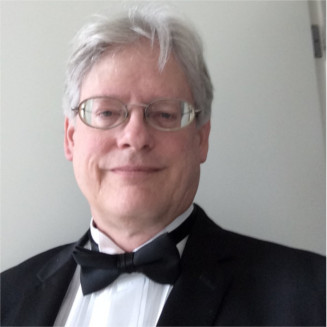Conférenciers invités
 Prof. Dr. Matthias Mack (Mannheim, Germany)
Prof. Dr. Matthias Mack (Mannheim, Germany)
Le Groupe de Matthias Mack à l'Université des sciences appliquées de Mannheim enquête sur la bactérie Streptomyces davawensis Gram positif. S. davawensis synthétise la roséoflavine un analogue de la riboflavine naturel connu pour sa fonction antibiotique. En outre, S. davawensis est le seul organisme connu pour produire la roséoflavine. La roséoflavine est d'un intérêt particulier, puisque le précurseur direct de cet antibiotique est la vitamine la riboflavine (vitamine B2) . Ils étudient la voie de biosynthèse de la roséoflavine ainsi que son mécanisme d'action.
Pour plus d'informations : http://www.biotech.hs-mannheim.de/fakultaet/institute/technische-mikrobiologie/prof-dr-m-mack.html
 Prof. Dr. Bernold Hasenknopf (Université Pierre et Marie Curie, Paris)
Prof. Dr. Bernold Hasenknopf (Université Pierre et Marie Curie, Paris)
La recherche de Bernold Hasenknopf est centrée sur la chimie supramoléculaire des assemblages polymétalliques et leurs interactions avec des biomolécules. Il a développé des méthodes de post-fonctionnalisation organique de polyoxométallates en étroite et fructueuse collaboration avec Serge Thorimbert et Emmanuel Lacôte depuis plus de dix ans. Il a aussi travaillé avec Claude Cochet sur les polyoxométallates en tant qu'enzymes inhibitrices, et il a démontré une inhibition très efficace de la kinase humaise CK2. En 2009, il a fondé le groupe de Chimie Suprampléculaire à l'Institut Parisien de Chimie Moléculaire de l'UPMC, qui fait à présent partie du groupe "Glycochimie organique, biologique et chimie supramoléculaire". Ses récents projets s'orientent autour des assemblages des polyoxométallates, des hybrides ADN-polyoxométallates, des cyclodextrines-polyrotaxanes pour l'imagerie biomodale et les commutateurs magnétiques.
Pour plus d'informations : http://www.ipcm.fr/HASENKNOPF-Bernold
 Dr. Anke Sparmann (NSMB editor)
Dr. Anke Sparmann (NSMB editor)
Anke is an Associate Editor at ‘Nature Structural & Molecular Biology’. She started her editorial career at ‘The EMBO Journal’, and joined the NSMB team after a brief interlude at ‘Nature Communications’. Working for three distinct scientific journals provided her with unique experiences and perspectives, which she will share in her presentation. Prior to becoming a scientific editor, Anke completed a post-doctoral period in the group of Maarten van Lohuizen at the Netherlands Cancer Institute in Amsterdam, focusing on analysing dynamic changes of Polycomb-complex composition during neural stem cell differentiation. She obtained her Ph.D. with Dafna Bar-Sagi at the State University of New York at Stony Brook, where she studied the role of Ras-induced Interleukin-8 expression in tumor growth and angiogenesis.
Dr Jean-Louis Brayer (Diverchim, CEO)
Jean Louis BRAYER was graduated from ENSCP (Ecole Nationale Supérieure de Chimie de Paris Chimie Paristech) in 1979.He obtained his PhD in 1982 under the supervision of Sir Dereck BARTON (Nobel Prize) and Pierre POTIER at Gif-sur-Yvette ICSN (French National Institute of Natural Product) and worked on the total synthesis of natural products such as iridoides and succeeded in total synthesis of Tecomanine and Viburtinal.
In 1982, he joined the Roussel UCLAF group in Romainville (France) and became principal scientist and developed stereo-specific synthesis of 1- and 3-fluoro pyrethroides for insecticide activity.
In 1984, he created the first mix unit between Academy and Industry (CNRS/Roussel unit) and worked on the industrial approach of total synthesis of thiocolchicoside.
In 1987, he became group leader in fungicidal chemistry and developed specific methodologies for the development of b Methoxy acrylate fungicides.
After the merging process between Hoechst Marion and Roussel, he joined the Glaxo Wellcome group as head of Medicinal chemistry in Les Ulis (France) and worldwide coordinator for combinatorial chemistry.
He was convinced that the pharmaceutical industry will change in a near future (chemistry becoming a tool and biology-biotechnology the new vectors of innovation with the definition of targets, HTS, HCS…). He also was inspired by some US models such as Albany Molecular, also the splitting of Drug discovery and Process development, and created DIVERCHIM in order to propose full services in Medicinal chemistry, Process development and Analytical development for the pharma and biotech industries.
In 2000, DIVERCHIM starts with only 6 people, and 14 years later, they were 52 working in its new facility in Roissy-en-France (France). DIVERCHIM developed new methodology in cyclopropane chemistry and unnatural amino acides. (Pierre POTIER Prize for innovation in 2013)
In 2012, DIVERCHIM set up the first chemogenetic Laboratory in collaboration with the Servier Group at the ICM (Brain and Spine cord Institute) in Paris.
Now, DIVERCHIM is qualified as cGMP by the French National Authority ANSM and its pilot plant and Kilo Labs are classified as a pharmaceutical company for the production of API.
Jean Louis BRAYER is the author of more than 17 publications, 30 patents and lecturer in 5 international conferences.
 Grant Green, Patent Lawyer Roche, USA
Grant Green, Patent Lawyer Roche, USA
Do you love Science, but feel tired of lab? Do you write well? Would you like to be paid for arguing? Maybe your future is a career in Patent Law! This presentation will describe some of the details of Patent Law and Intellectual Property, and the path to becoming a Patent Attorney.
Mr. Green holds degrees in Chemistry and Physical Organic Chemistry from Harvey Mudd College and the University of Texas at Austin, and a Juris Doctor from Golden Gate University School of Law. He has been a US patent attorney since 1984, and has worked in law firms and pharmaceutical companies, and has taught Patent Law at the University of California at Berkeley (Boalt Hall).


